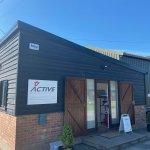Why do I keep getting the same running injury?

As if getting a running injury is not frustrating enough, the research evidence tells us that you are much more likely to get the same injury again in the future.
Why is this?
When we suffer a running related injury such as an Achilles tendinopathy, the injured structure goes through cellular changes as part of the healing process, and these changes can sometimes leave the structure weaker than it was before, leading to a reduced load tolerance. The reactive phase of the injury, where it is painful, soon passes with rest, and that gives the impression that all is well and we can return to running. That is fine for a while, but as training loads and demands on the tissue build up with increasing mileage, frequency of runs and more effort, the injured tissue starts to become overloaded again and a recurrence of the original injury is likely to occur.
Does this mean that rest alone is not enough?
Well it depends. In the event of a minor injury, such as delayed onset soreness after a particularly hard training session the previous day, then a short period of rest is likely to allow sufficient time for the tissues to recover without any further work being needed.
However, in the case of a more significant injury, resting too much can simply cause the injured structure to become weaker still, prolonging recovery as the tissue adapts to the decreased workload and becomes de-conditioned. However, if you put too much load through the tissues too early, they can become overloaded and painful again, setting the rehabilitation process back.
So what is the answer?
The secret of a successful rehabilitation programme is to reintroduce loads to the injured tissue gradually, increasing its strength and load capacity over time until you are back to your regular running volume. This time period varies according to the circumstances of the injury, and it is impossible to adopt a cookbook recipe approach, as every individual will respond differently.
In broad terms, a regular exercise programme targeting key muscle groups and areas of weakness is proven to reduce the risk of a repetitive running injury.

How we can help
Sometimes it is hard to know which areas need strengthening, and which exercises work best to help recovery after an injury. At Active we have the skills and equipment that can help you with a targeted specific programme to get you back to fitness as soon as possible, reducing the risk of the same injury recurring in the future.
If you have a long-term niggling injury that keeps on coming back, or if you are struggling to get back after a long layoff, get in touch with us to start your recovery journey and get back on your feet.
